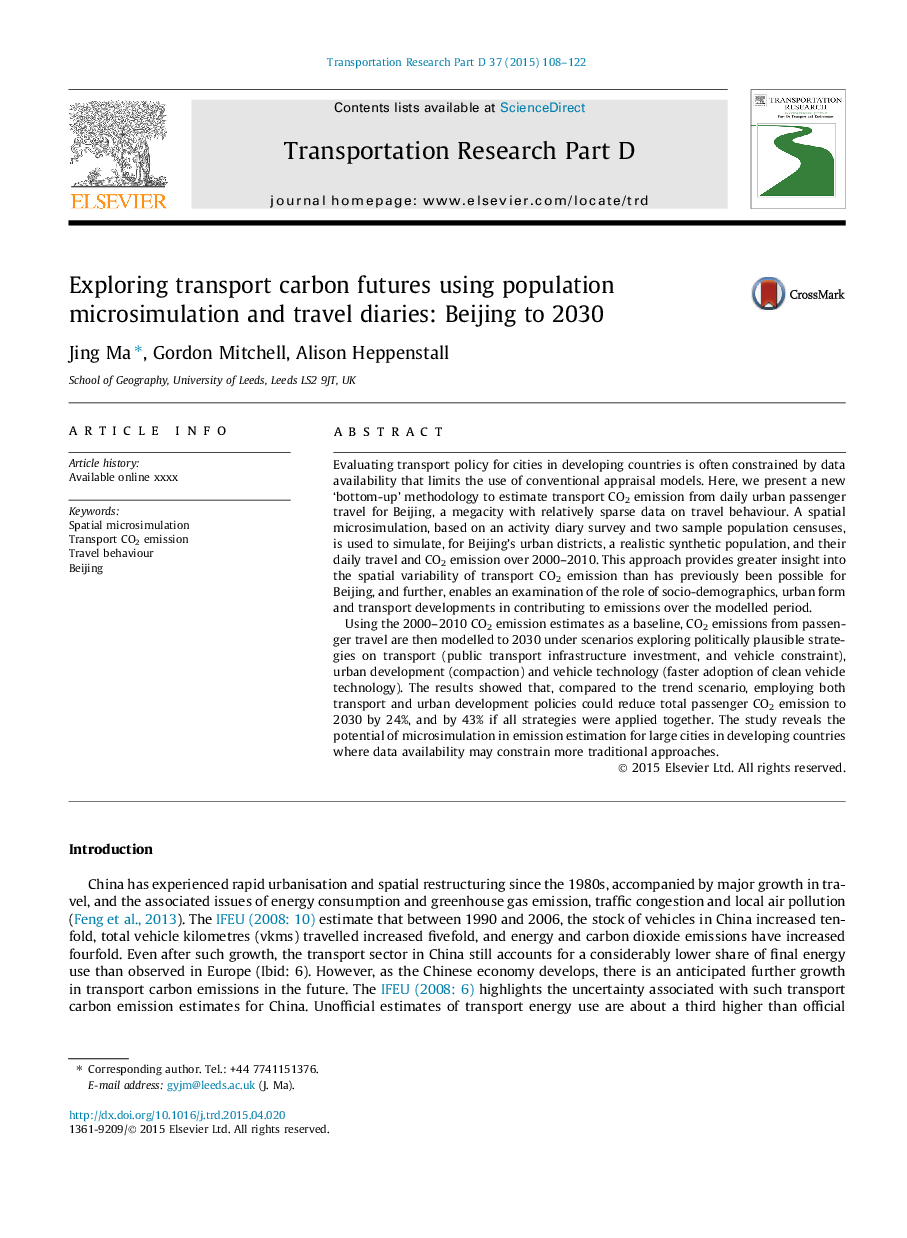| کد مقاله | کد نشریه | سال انتشار | مقاله انگلیسی | نسخه تمام متن |
|---|---|---|---|---|
| 1065751 | 1485886 | 2015 | 15 صفحه PDF | دانلود رایگان |
• A new ‘bottom-up’ methodology is developed to estimate transport CO2 emission.
• People’s daily travel and CO2 emission are spatially simulated over 2000–2010.
• Transport CO2 emission is modelled to 2030 under four scenarios upon daily travel.
• A combination of measures could reduce transport CO2 emissions by 43% to 2030.
Evaluating transport policy for cities in developing countries is often constrained by data availability that limits the use of conventional appraisal models. Here, we present a new ‘bottom-up’ methodology to estimate transport CO2 emission from daily urban passenger travel for Beijing, a megacity with relatively sparse data on travel behaviour. A spatial microsimulation, based on an activity diary survey and two sample population censuses, is used to simulate, for Beijing’s urban districts, a realistic synthetic population, and their daily travel and CO2 emission over 2000–2010. This approach provides greater insight into the spatial variability of transport CO2 emission than has previously been possible for Beijing, and further, enables an examination of the role of socio-demographics, urban form and transport developments in contributing to emissions over the modelled period.Using the 2000–2010 CO2 emission estimates as a baseline, CO2 emissions from passenger travel are then modelled to 2030 under scenarios exploring politically plausible strategies on transport (public transport infrastructure investment, and vehicle constraint), urban development (compaction) and vehicle technology (faster adoption of clean vehicle technology). The results showed that, compared to the trend scenario, employing both transport and urban development policies could reduce total passenger CO2 emission to 2030 by 24%, and by 43% if all strategies were applied together. The study reveals the potential of microsimulation in emission estimation for large cities in developing countries where data availability may constrain more traditional approaches.
Journal: Transportation Research Part D: Transport and Environment - Volume 37, June 2015, Pages 108–122
